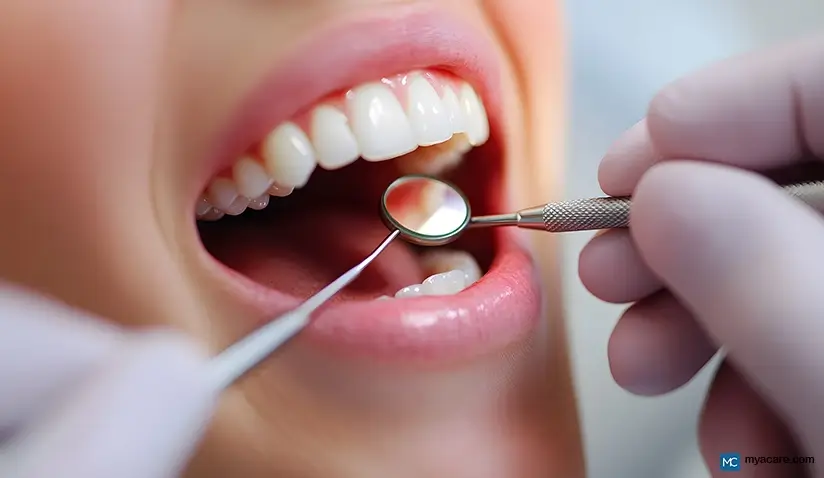Are High-Oxalate Foods Better Avoided for Kidney and Overall Health?

Medically Reviewed by Dr. Rae Osborn, Ph.D. and Dr. Rosmy Barrios - March 04, 2025
How Oxalate Affects Your Health
Factors Increasing Oxalate Uptake and Buildup
How Much Oxalate Per Day is Healthy?
If you have ever suffered from kidney stones, you may have heard of oxalate. Oxalate is a natural substance that is found in many foods and produced by your body. It can bind to minerals like calcium and form crystals that may cause kidney stones or other health problems.
In this article, we will discuss what oxalate is, how it affects your health, and how you can manage your oxalate intake.
What is Oxalate and Where Does It Come From?
Oxalate is the insoluble salt of oxalic acid, an organic acid, both of which are present in almost all foods and are also made by the body. Dietary oxalates are considered by some to be ‘antinutrients' due to their effects on nutrient absorption and possible role in kidney stone formation. Plants contain oxalate and other antinutrients, like phytate and lectins, to protect themselves from predators. Some foods possess noticeably high amounts of oxalate, such as spinach, rhubarb, nuts, beans, chocolate, and tea.
When oxalate enters the gut, it is partially degraded by gut bacteria and bound partially to minerals, both of which promote its swift excretion. The remaining free oxalate is absorbed in the gut in the presence of calcium. Oxalate is mainly excreted via the kidneys and only minimally by the liver. Oxalate is also produced by your body as a byproduct of oxalic acid metabolism, especially from vitamin C and the amino acids glycine and hydroxyproline. Oxalic acid is used in minuscule quantities in all cells for the production of uracil, a nucleotide found in RNA.
Health problems can occur with long-term excessive consumption of high oxalate foods, especially in sensitive individuals who absorb higher amounts, produce more, or battle to excrete oxalate. Once in the body, oxalate can go on to further bind to bone minerals, contribute towards kidney stone formation, as well as accumulate in the kidneys, other organs, and tissues.
How Oxalate Affects Your Health
The most common problems attributed to oxalates are mineral depletion and kidney stone formation.
Mineral Depletion. Oxalate can interfere with the absorption of minerals like calcium, iron, magnesium, and zinc from the diet. This can lead to mineral deficiency and exacerbate related health problems, such as:
- Osteoporosis
- Anemia
- Muscle cramps
- Immune dysfunction
Kidney Stones and Damage. Oxalate can also contribute to kidney stone formation by binding with calcium in the urine and forming crystals. This condition is known as calcium oxalate nephrolithiasis. Calcium oxalate kidney stones are the most prevalent type of kidney stone, accounting for up to 80% of all cases. Kidney stones can cause obstruction, severe pain, nausea, vomiting, blood in the urine, fever, chills, and urinary tract infections. If left untreated, kidney stones can cause kidney damage and lead to chronic kidney disease or kidney failure. Prior to kidney stone formation, oxalate excretion via the kidneys may inflame or damage them. The enzymatic breakdown of oxalate can also increase protein production in the body, which can indirectly contribute to kidney damage in the long run.
Gut Irritation. High quantities of dietary oxalates can irritate the gut and cause bloating, especially in those sensitive to oxalate or who have a weak digestive system. Oxalates are also toxic to certain kinds of beneficial gut bacteria, such as bifidobacteria.
Other Health Conditions Arising from Oxalate Overload
Oxalate can also cause other health problems, such as:
- Hyperoxaluria: This is when there is too much oxalate present in the urine. It can be attributed to genetics or diet. This can cause kidney stones with symptoms such as nausea, fever, pain, and fatigue.
- Hyperoxalemia: This is a condition where oxalate builds up in the blood. This can occur when the kidneys are not able to filter out enough oxalate or when there is excessive oxalate production or absorption from the diet or the gut.
- Oxalosis: This is a rare condition where oxalates deposit in various tissues and organs, such as the eyes, bones, muscles, skin, blood vessels, heart, and brain. It can cause vision loss, bone and nerve pain, joint pain, muscle pain, skin ulcers, anemia, heart failure, and neurological problems. It usually occurs after long-term hyperoxalemia or if the kidneys struggle to function properly in people with hyperoxaluria.
- Vulvodynia: This is a chronic pain syndrome of the vulva, the inner skin around the opening of the vagina. Symptoms include burning, itching, soreness, stinging, or throbbing sensations. Some cases of vulvodynia were thought to be associated with high levels of oxalates in the urine. However, a recent review suggests that nutritional factors may not be linked to vulvodynia. More research is required to determine if oxalates are linked in any way to vulvodynia.
- Autism: This is a developmental disorder that affects communication and behavior. Some studies have suggested that oxalates may play a role in autism by affecting brain function and metabolism.
- Cancer: There are mixed studies with respect to oxalates and carcinogenesis. Oxalates may promote breast cancer and tumor metastasis in the kidney. Other studies suggest that it may encourage tumor cell death through binding to calcium.
Factors that Increase Oxalate Uptake, Synthesis and Accumulation
Not everyone is sensitive towards oxalates, although consuming a very high amount for a prolonged period of time is not recommended. One’s sensitivity towards oxalate depends on genetics, the state of the gut and microbiome, nutritional status, as well as the health and functioning of the liver and kidneys.
Some individuals are genetically susceptible to forming kidney stones due to deletion mutations in the gene responsible for its elimination: SLC26A1. This gene regulates the expression of proteins that promote the clearance of oxalates and other substances, such as sulfate, chloride, bicarbonate, formate, and other anions.
Those genetically susceptible are likely to exhibit high oxalate content in their urine (hyperoxaluria) and be more sensitive to dietary oxalates, having a weaker microbiome and absorbing more on average. Diet is important because there is an increased risk of kidney stones in people eating high-oxalate foods.
Other factors that can influence the risk for kidney stones and hyperoxalemia include:
- Glyoxylate and lactate dehydrogenase. Glyoxylate is a precursor to oxalate and is converted to oxalate by lactate dehydrogenase. High levels of this enzyme can be due to tissue injury or disease.
- Metabolic acidosis. Extreme buildup or acidosis is known to promote oxaluria and kidney damage. Excessive levels of lactic acid can lead to metabolic acidosis. The overproduction of lactic acid can result from starvation, disease, or toxins.
- High vitamin C intake. Excess vitamin C can metabolize into oxalate either directly or indirectly, although it can also promote the excretion of oxalate. Those who form kidney stones have been shown to absorb up to 1.9% more oxalates when taking ascorbate supplements versus those not taking supplements.
- Inflammation enhances the bodily production of oxalate. Inflammatory bowel disease has been linked with increased oxalates and kidney stones.
- Nutritional deficiencies, including those of vitamin B6, calcium, and magnesium. Thiamine deficiency increases the risk of hyperoxalosis. A diet low in antioxidant nutrients may also contribute by promoting inflammation and oxalate formation in the body, which can lead to kidney stones.
- A gut barrier breach or lower gut microbe diversity, which can increase dietary oxalate absorption as well as lower its degradation and excretion. In a healthy gut, lactobacilli may degrade oxalate by up to 68%. Oxalobacter also degrades oxalate and results in a 70% decrease in kidney stone formation.
- Small bowel malabsorption. Oxalate uptake is increased in people with this condition. Malabsorption can happen as a result of intestinal surgery.
- Low dietary calcium or citrate. Citrate combines with calcium, preventing it from binding with oxalate and forming kidney stones. Low dietary levels are associated with higher oxalate absorption. Potassium citrate treatment combined with Lactobacillus spp. and Bifidobacterium bacteria helps reduce kidney stone formation.
How Much Oxalate Per Day Is Healthy?
There is no clear answer as to how much oxalate per day is unhealthy for those who aren’t at risk of kidney stones.
It has been theorized that optimal levels for the body to excrete are below 25 mg of oxalate through urine per day. Studies assessing oxalate absorption estimate that we absorb 2-20% of ingested oxalates if we consume 800 mg of calcium per day.
This means that those who can tolerate more oxalates are likely to have healthier guts, consume a lot more calcium, and have no genetic issues regarding oxalate metabolism. It is worth mentioning that an excessively high daily intake of oxalate might induce sensitivity to them over time, yet many high oxalate foods are nutritious and beneficial for health and should not be entirely avoided unless one is highly sensitive.
Healthy individuals may want to avoid foods high in oxalate if unwell, when dehydrated, or when having an upset stomach. This is because dehydration can increase the chance of oxalate stones forming in the kidney.
Preventing Calcium Oxalate Stones and Body Oxalate Accumulation
For those sensitive to oxalate or at a high risk of kidney stones or problems, it can be a good idea to limit oxalate intake to less than 50mg per day and lower its production in the body. This is lower than the normal intake of about 200 to 300 mg per day.
Those who are already generally healthy and who suffer from the following conditions may also benefit from moderating their oxalate intake:
- Nutritional deficiencies
- IBS/IBD
- Allergies or food sensitivities. Oxalate sensitivity can occur in some people.
- Cardiovascular conditions like atherosclerosis
- Anemia
- Bone problems, including osteoporosis
Here are some tips to help you prevent calcium oxalate stones:
Drink Enough Water
Water is essential for keeping your urine diluted and preventing crystal formation. You should drink at least 4 to 6 cups of water per day if you are healthy, or more if you sweat a lot or live in a hot climate locale. You can also drink other fluids, such as herbal teas (e.g., green tea) and fruit juices such as apple or orange juice, yet avoid beverages high in oxalates or that increase body oxalate, such as black tea, sugar and caffeine-containing cola, and beer.
Consume Adequate Calcium
Calcium is vital for your bones, teeth, and muscles, but it also helps prevent kidney stones by binding with oxalate in your gut and reducing its absorption into your bloodstream. You should aim for about 1 gram (1000 mg) of calcium daily from food sources or supplements. Some beneficial sources of calcium include dairy products (such as milk, cheese, and yogurt), legumes, low-oxalate nuts, green leafy vegetables (such as kale and broccoli), tofu, and fish.
Reduce Salt Intake
Salt can increase your uric acid level, causing a problem with the calcium level, which can promote stone formation. You should limit your salt intake to less than 2 grams (2000 mg) per day or 1.5 grams (1500 mg) if you have high blood pressure or kidney disease. You can reduce your salt intake by avoiding processed foods (such as canned soups, frozen meals, and salty snacks), using herbs and spices instead of salt to flavor your food, and reading food labels to check the sodium content.
Reduce Animal Protein Intake
Animal protein can also increase your urine calcium and uric acid levels, which can promote stone formation. You should restrict your intake of animal protein to less than 0.8 grams per kilogram of body weight per day or approximately 56 grams (2 ounces) for a 70 kg (154 lb) person. You can reduce your animal protein intake by opting for lean meats (such as chicken, turkey, and fish) and having meatless meals at least once or twice a week.
Regular Exercise
As lactic acid buildup during exercise helps reduce oxalates, regular exercise is important for preventing kidney stones and helping keep oxalates in check. Exercise may have additional benefits, such as regulating inflammation, blood glucose, and overall metabolism, which may serve to keep oxalate production to a minimum as well. A ketogenic diet might pose similar benefits and help lower body oxalate concentrations.
Do Not Consume Too Much Sugar or Fructose
Both refined sugar, such as high fructose corn syrup, and fructose can negatively affect kidney and liver function, lower one’s ability to handle oxalates, and may even increase body oxalate deposition through different means. Certain fruits are naturally low in oxalates yet high in fructose. Consuming low-glycemic fruits within the context of a balanced diet may help keep oxalates in balance. This would be helpful since diabetics often have higher levels of glyoxylates, which are precursor molecules of oxalates. Following a lower GI diet could mean better blood sugar control and lower oxalates. Citrus fruits, like lemon and lime, have the added bonus of being high in citric acid and offering modest amounts of calcium.
Increase Citrate Intake
Citrate is a natural substance that can inhibit crystal formation by binding with calcium and oxalate in the urine. You can increase your citrate intake by consuming more fruits and vegetables, especially citrus fruits (such as oranges, lemons, and grapefruits), melons (such as watermelon and cantaloupe), and berries (such as strawberries and blueberries). You can also take citrate supplements, such as potassium citrate or sodium citrate, under the guidance of your doctor.
Probiotics and Prebiotics
Consuming small quantities of probiotics, lacto-fermented foods, and vinegar may be able to reduce oxalate absorption as well as enhance their metabolism and excretion once absorbed. Lacto-ferments help to repopulate the gut with oxalate-degrading lactic acid bacteria. Prebiotics help increase the population of oxalate-degrading bacteria like Lactobillus, thus indirectly helping reduce oxalate. Vinegar is associated with a lower risk of kidney stone formation, possibly due to regulating oxalate absorption, promoting citrate production, and oxalate excretion.
Avoid or Limit Foods High in Oxalate
Oxalates are the main culprit for causing kidney stones, so you should avoid or limit foods that are high in oxalates. These contain more than 50 mg per serving and sometimes even between 100-1000 mg. Some people may need to restrict their intake of moderate oxalate foods as well.
Foods high in oxalate relative to their serving sizes are almost always leafy greens. Some teas, herbs and spices, and grains may also contain large quantities, yet as they are not consumed in significant amounts, they don’t often trouble those who opt for a balanced diet.
High oxalate foods, relative to their serving sizes, include:
- Star fruit, depending on the variety, can have up to 7 mg/g of oxalate. Rhubarb nectar, which can contain 198.3 mg/100 mL.Spinach, which can contain up to 755 mg per half cup cooked.
- Beet leaves, containing 300- 920 mg/100 g
- Beets, containing 152 mg per cup, depending on the type
- Cocoa powder, which can contain between 650-783 mg per 100 g
- Almonds, 122 mg per 1 oz.
You can find a list of foods that are high, moderate, or low in oxalates online or through your doctor or dietitian. The amount of oxalate will vary depending on whether the food is raw or cooked. Boiling can, for instance, decrease the oxalate content of some foods. The specific cultivar may also impact oxalate content, with some forms of spinach containing even higher levels.
Following a Low Oxalate Diet
A low oxalate diet is a type of diet that can help reduce your oxalate intake to prevent kidney stones and hyperoxalemia. Following a low oxalate diet involves avoiding foods that are high in oxalates and choosing low or moderate sources instead. The amount of oxalate that you need to limit depends on several factors, such as your medical history, kidney function, urine output, calcium intake, and genetic predisposition. Data on the oxalate content of different foods can vary since different sources and techniques may have been used to measure oxalate content. For instance, the classification of low oxalate foods may range from 2 mg or less (of oxalate per serving) to 10 mg or less, depending on the information source. Generally, a low oxalate diet is considered less than 100 mg per day, though some people may need to restrict it to less than 50 mg per day. However, given the need for precision and to avoid limiting certain foods unnecessarily, it is essential to consult your doctor or a dietitian before making dietary changes, especially in case of underlying health conditions.
Here are some examples of foods that are low or moderate in oxalates:
- Vegetables: Asparagus, broccoli, cauliflower, celery, cucumber, lettuce, onion, green beans, carrots, corn, peas, and zucchini.
- Fruits: Apple, banana, grapefruit, kiwi, mango, orange, peach, pear, and pineapple.
- Grains: Rice, oat bran, and barley.
- Meat and poultry: Chicken, turkey, ground beef, pork, and lean lamb.
- Eggs: Whole eggs or egg whites.
- Dairy products: Milk, cheese, yogurt, butter, and cream.
- Nuts and seeds: Walnuts, pecans, sunflower seeds, and pumpkin seeds.
- Legumes: Lentils, chickpeas, and kidney beans.
Here are some tips on how to reduce the oxalate content of foods:
- Soak and cook certain vegetables and legumes (such as potatoes and beans) for at least 10 mins before eating them. This can reduce the oxalate content. In the case of cooking methods, boiling removes the most oxalate at between 30 to 87%.
- In some cases, peeling fruits (like guava, which has a high oxalate content in the peel) can be useful. Similarly, removing the skin of vegetables (like potatoes, which have a high oxalate content in the skin) before eating them can reduce the oxalate content.
- Discard the water used for boiling or steaming foods instead of consuming them with or incorporating them into the meal. This can reduce the oxalate content even more. Soaking raw vegetables like taro for 18 hrs before cooking can result in a drop in oxalates of about 26%.
Conclusion
Oxalate is a natural substance that can pose drawbacks for your health, depending on the amount consumed and how well it is balanced with other nutrients. The main problems associated with a high oxalate intake include lower mineral absorption, an increased risk of kidney stone formation, and other health problems due to oxalate accumulation. Those with weaker digestive systems, who consume less calcium daily, who have metabolic problems, or relevant gene mutations might be more sensitive due to absorbing more oxalate or struggling to excrete it.
You can prevent kidney stones and improve your health by following some dietary and lifestyle strategies that support oxalate metabolism. These include drinking enough water, getting enough calcium, reducing your salt and animal protein intake, increasing your citrate intake, and avoiding or limiting foods that are high in oxalates.
To search for the best Dietitian/Nutritionists in Croatia, Germany, India, Malaysia, Slovakia, Spain, Thailand, Turkey, the UAE, the UK and The USA, please use the Mya Care search engine.
To search for the best healthcare providers worldwide, please use the Mya Care search engine.
The Mya Care Editorial Team comprises medical doctors and qualified professionals with a background in healthcare, dedicated to delivering trustworthy, evidence-based health content.
Our team draws on authoritative sources, including systematic reviews published in top-tier medical journals, the latest academic and professional books by renowned experts, and official guidelines from authoritative global health organizations. This rigorous process ensures every article reflects current medical standards and is regularly updated to include the latest healthcare insights.

Dr. Rae Osborn has a Ph.D. in Biology from the University of Texas at Arlington. She was a tenured Associate Professor of Biology at Northwestern State University, where she taught many courses to Pre-nursing and Pre-medical students. She has written extensively on medical conditions and healthy lifestyle topics, including nutrition. She is from South Africa but lived and taught in the United States for 18 years.

Dr. Rosmy Barrios is an aesthetic medicine specialist with international work experience. She earned her physician diploma at the Universidad Del Norte’s School of Medicine in Barranquilla, Colombia, and her specialty at John F. Kennedy University in Buenos Aires, Argentina. Dr. Barrios is a member of the Pan-American Aesthetic Medicine Association (PASAM) and the Union Internationale de Médecine Esthétique (UIME). She is an expert health writer with keen interests in aesthetic medicine, regenerative aesthetics, anti-aging, fitness, and nutrition. Currently, Dr. Barrios heads the Regenerative Aesthetics department at a renowned Internal Medicine clinic based in Belgrade, Serbia.
Sources:
Featured Blogs



